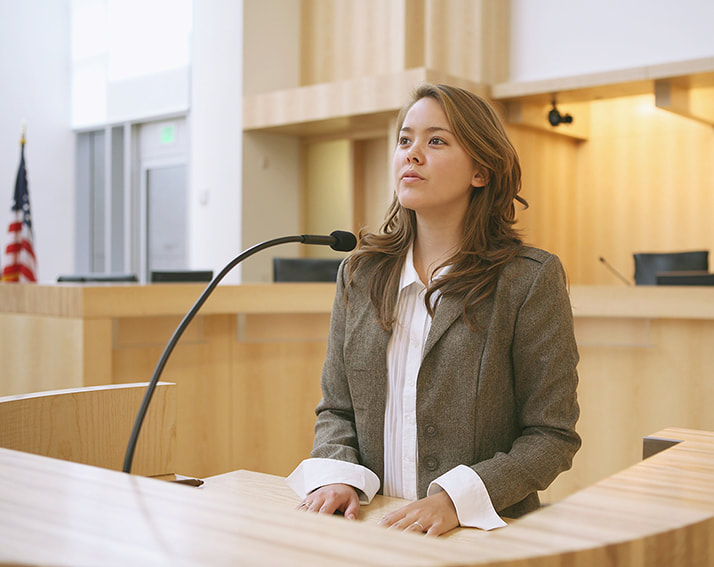Restorative Justice is an approach to address crime or conflict
Restorative justice is an approach to address crime or conflict. It focuses on the needs of victims to heal from harm they incurred; it increases offender accountability to repair the actual harm caused, and includes impacted community members to assist in developing terms of how to best move forward. When victims, offenders and community members meet to decide how to do that, the results can be transformational.
Restorative Justice practices seek to achieve justice by involving, to the greatest extent possible, those who have a stake in a specific offense or harm, and collectively identify and address problems, needs, and obligations in order to put things as right as possible.
Restorative Justice practices seek to achieve justice by involving, to the greatest extent possible, those who have a stake in a specific offense or harm, and collectively identify and address problems, needs, and obligations in order to put things as right as possible.
What Restorative Justice is Not
|
Goals of Restorative Justice
- Put key decisions into the hands of those most affected by the crime or harm done;
- Make justice more healing and ideally, more transformative;
- Reduce the likelihood of future offenses.
To refer youth's to our services please:
a. Fill out this online form OR
b. Download the below fillable referral form then email us at [email protected]
| HOPE City Youth Referral Form | |
| File Size: | 47 kb |
| File Type: | |
Three pillars of Restorative Justice
1. Restorative Justice focuses on HARM.
We understand that an offense committed is not done in a vacuum; it is done to people and community. Restorative Justice begins with a focus on the needs of the victim and the community with this approach it leads to the repairing of the harm caused as much as it is possible in both concrete and symbolical ways.
2. Restorative Justice focuses on that wrongs/harms result in OBLIGATIONS.
Because there is a focus on the obligations of the offender in Restorative Justice it brings an emphasis on accountability and responsibility to them. Accountability assumes the role in helping the offender to comprehend the consequences and responsibility of their behavior. This approach helps them to take personal account of what they have done and the obligation to repair the harm.
3. Restorative Justice promotes ENGAGEMENT & PARTICIPATION.
The principle of engagement suggests that the primary parties affected by crime-those who have been victimized, members of the community and the offender – are provided significant roles in the restorative justice process.
In essence Restorative Justice requires, at a minimum, that we address the harms and needs of those harmed, hold those causing harm accountable to “put right” those harms, and involve both of these parties as well as relevant communities in this process.
We understand that an offense committed is not done in a vacuum; it is done to people and community. Restorative Justice begins with a focus on the needs of the victim and the community with this approach it leads to the repairing of the harm caused as much as it is possible in both concrete and symbolical ways.
2. Restorative Justice focuses on that wrongs/harms result in OBLIGATIONS.
Because there is a focus on the obligations of the offender in Restorative Justice it brings an emphasis on accountability and responsibility to them. Accountability assumes the role in helping the offender to comprehend the consequences and responsibility of their behavior. This approach helps them to take personal account of what they have done and the obligation to repair the harm.
3. Restorative Justice promotes ENGAGEMENT & PARTICIPATION.
The principle of engagement suggests that the primary parties affected by crime-those who have been victimized, members of the community and the offender – are provided significant roles in the restorative justice process.
In essence Restorative Justice requires, at a minimum, that we address the harms and needs of those harmed, hold those causing harm accountable to “put right” those harms, and involve both of these parties as well as relevant communities in this process.
Guiding questions of Restorative Justice
These questions help boil down what the essence of Restorative Justice process is and the outcomes that it can bring.
- Who has been harmed?
- What are their needs?
- Whose obligations are these?
- Who has a stake in this situation?
- What are the causes?
- What is the appropriate process to involve the stake holders in an effort to put things right and address underlying causes?
Learn More About The Areas We Serve
|
Schools
We involve all those impacted by conflict to find a way forward. Learn more about our restorative practices in schools. |
Justice System
The services and programs HOPE City offers are an alternative to traditional criminal justice processes. Learn more about victim/offender discussions and more. |
Families
HOPE City desires is to see family connections strengthened across our city. Learn more about our Restorative Parenting Classes and Family Reconciliation Circles. |




